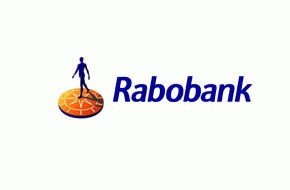
Content supplied by Rabobank

The specialist agribusiness bank says the slowdown in combined milk production growth seen in quarter two 2018 from the ‘Big 7’ (the EU, the US, New Zealand, Australia, Uruguay, Argentina and Brazil), at just one per cent year-on-year (YOY), has trickled through to quarter three, driven by a number of factors including drought conditions in parts of northern and western Europe.
The report says decreased milk production from drought impacted areas is at odds with the start to the New Zealand dairy season where near-perfect weather and more cows milked over the winter period resulted in production growth of five per cent YOY over the seasonal trough period from June to August.
Report author, Rabobank dairy analyst Emma Higgins says the jump in New Zealand milk supply has created a lack of buyer urgency for Oceania-origin products over the past quarter and this continued in the most recent GDT Event.
“This lack of buyer urgency has resulted in weaker pricing which fed into the bank’s downward revision to its full-year forecast from NZD 6.80/kgMS to NZD 6.65/kgMS for the 2018/19 season,” she said.
Ms Higgins said while Rabobank’s forecast milk price had been pared back, there had not been a larger downward revision due to Rabobank’s expectation that global milk supply growth will tighten in the coming year.
“Ultimately, milk deliveries from major exporting regions will lift only modestly during the coming 12 months compared to the year prior, driven by tight margins on-farm and lingering effects of adverse weather,” she said.
“We anticipate available dairy for export will significantly tighten across the coming months which will provide some upside to dairy commodity pricing, particularly moving into 2019 – and this has been factored into our revised forecast.”
Ms Higgins says an anticipated lift in Chinese demand across the remainder of 2018 is another factor which would underpin the New Zealand milk price this season.
“While local milk production is improving in China, dairy demand remains robust. We anticipate a lift in Chinese imports across the tail end of this year which will help soak up some of the excess NZ milk supply,” she said.
Slower global supply growth
While New Zealand milk production has jumped, the report says a range of issues in other key dairy regions contributed to slowing production growth across the ‘Big 7’ in quarter three.
“Hot and dry weather has seen shrivelling pastures in Australia, while drought conditions in parts of northern and western Europe have reduced milk volumes. Elsewhere, US milk supply also continues to track below historical averages, the Brazilian truckers strike earlier in the year curbed milk supply growth and expensive feed could now start to bite Argentina production.” Ms Higgins said.
“As a result, estimated flows for the ‘Big 7’ dairy exporters during quarter three 2018 are for just 0.4 per cent growth YOY – the lowest since 2016.”
Ms Higgins says the impact of more expensive feed costs and tighter margins for producers globally are now evident and will continue the squeeze into 2019.
“National dairy herd numbers are shrinking in Australia, Europe and the US as a result of producers scrambling to manage costs. Further increases in farm gate milk prices will be needed to negate the higher input costs and to improve volume growth,” she said.
What to watch
The report says developments in the US/China trade war, currency values and New Zealand production growth all have the potential to “move the needle” on global dairy prices in coming months.
“The full extent of the trade war fall-out on dairy is yet to be fully felt, with significant uncertainty regarding the impact on economic growth in China and on US export volumes, along with the impact on feed costs in both countries,” Ms Higgins said.
“The growing strength of the US dollar against most currencies is another significant factor to watch with further strengthening of the greenback against key importing currencies likely to weaken buying power in key importing regions.”
Ms Higgins said the market would also be keeping a close eye on how high New Zealand production bounces this season after the ideal weather conditions across winter and spring.
“Rabobank anticipates milk production growth of two per cent for the full 2018/19 season; however, we note that with Fonterra’s penalties for PKE use now in effect, more uncertainly lies in milk production levels for the first half of 2019,” she said.




We welcome your comments below. If you are not already registered, please register to comment.
Remember we welcome robust, respectful and insightful debate. We don't welcome abusive or defamatory comments and will de-register those repeatedly making such comments. Our current comment policy is here.